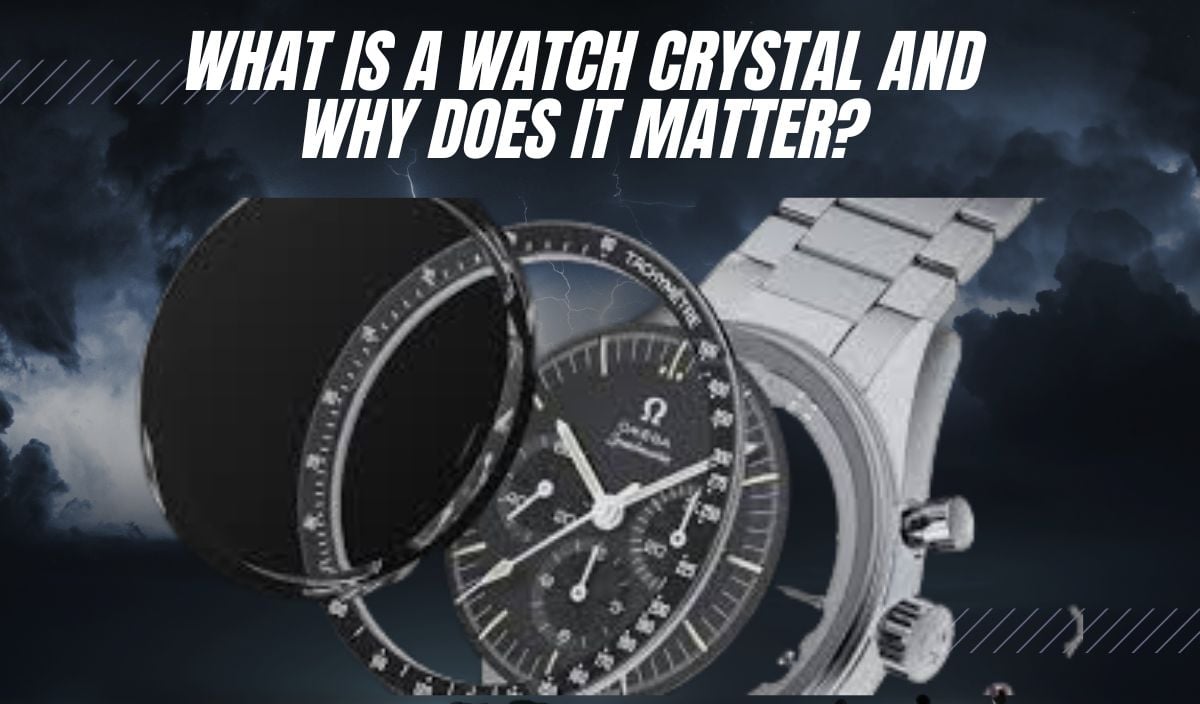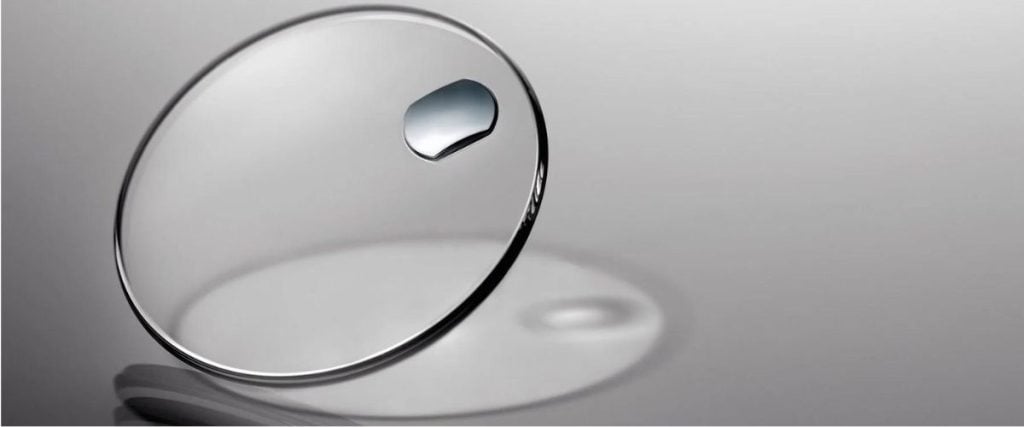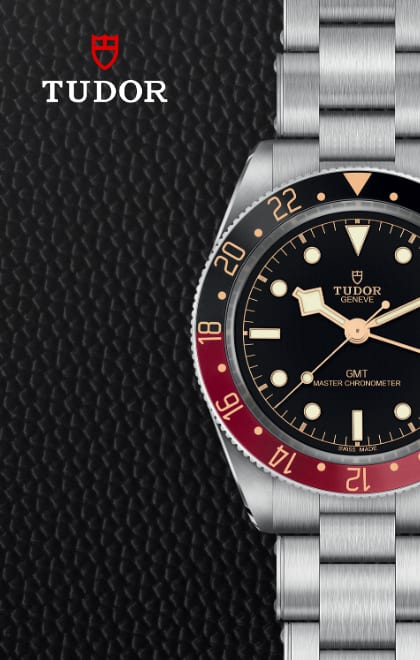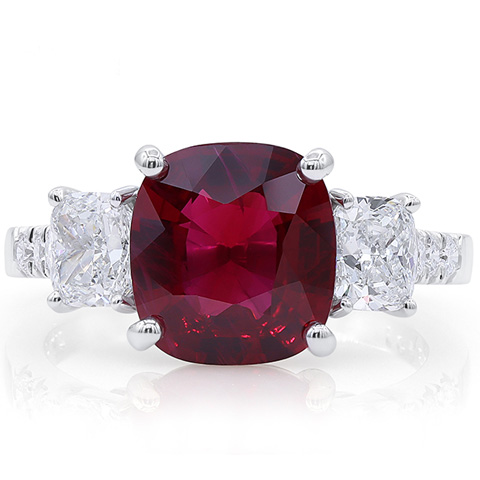
What is a Watch Crystal and Why Does it Matter?
Have you ever wondered what the term “watch crystal” means? Me too. When I see the word crystal, I instantly think of some fancy gemstone. But it has nothing to do with any diamonds or gemstones set on your watch’s case or dial. Instead, watch crystal refers to the type of glass placed above the display, keeping you from accidentally scratching the face of your favorite timepiece.
It’s that transparent cover that protects the dial of the watch. It is usually made from a material like acrylic, mineral glass, or sapphire crystal. It’s a crucial component of your timepiece, even though, in many cases, it’s barely noticeable. Not only does it shield the inner workings from dust, moisture, and the occasional bump, but it also affects the overall look of your watch.
There’s more to watch crystals than you might think. There are a variety of watch crystal types, each with its own pros and cons, plus a myriad of reasons why your watch crystal is vital in the durability of your timepiece. Let us explain…
The Importance of Watch Crystals

I like to think of my watch’s crystal as a shield. It’s a clear cover that sits over the dial, and it’s got a relatively important job to do. Sure, the case material is also super important in determining the look and durability of my watch, but the glass has an equal amount of responsibility.
It keeps those delicate inner workings of the watch safe from everyday wear and debris. I wear my watches all the time: out walking, traveling, and on formal occasions, so I need my watch crystal to protect it against everything. I’m talking scratches, dust, and even the occasional splash of water.
Watch crystal does exactly that; it keeps my watch looking good and ticking smoothly. Without a quality piece of crystal over the dial, my timepiece would be at risk of getting damaged, which is a pricey expense I want to avoid.
The glass also plays a huge role in how your watch looks. You can find domed crystals, flat crystals, and cambered crystals, all giving your watch a sleek and modern finish or more of a classic vintage vibe. There are a number of different watch crystals to choose from, all coming in at different price points too – so your budget will also slightly determine which watch crystal you can get.
Watch Crystal History
Understandably, the materials we have used in the creation of pocket watches and wristwatches have evolved dramatically over the years. That applies to watch crystals, too. Some of the first watches used glass to protect watch dials, often cut from mineral quartz. These early crystals were simple but functional, offering a basic level of protection against dust and damage.
It wasn’t until the early 20th century that acrylic glass emerged as an alternative. The material was a game-changer, as it was lighter and more impact-resistant, making it perfect for those who wanted to wear their watches every day without worry.
Acrylic glass was also a more affordable alternative than crystals made from mineral quartz, so wristwatches became not only more durable but also more accessible to the general public.
During the 1960’s, mineral glass became a common sight on watches. Made by adding various minerals to standard glass, this type of watch crystal offered the crisp look of glass but with improved scratch resistance and clarity.
However, the real breakthrough came just twenty years later, with the introduction of synthetic sapphire crystals in the 1980s. Boasting extreme levels of hardness and scratch resistance, sapphire crystal provided better protection than before, with a crystal-clear view of the dial. This material has allowed watchmakers to create even more refined and durable watches, setting new standards in the creation of modern timepieces.
Most Common Watch Crystal Materials
As history attests, there are a number of different watch crystals suited to protecting our timepieces. Some are favored more than others, but each has its own set of benefits and disadvantages.
Before you go out and choose your next timepiece, it’s good to know the differences between the most common watch crystals so you have a complete understanding of the levels of durability, scratch resistance, and readability of the design.
Sapphire Crystal
Personally, I consider sapphire crystal glass to be the crème de la crème of watch crystals. It’s one of the newest materials used for watch glass and as such is considered the most durable and scratch resistant. As its name suggests, it’s made from synthetic sapphire and boasts a hardness second only to diamonds – the strongest material in the world.
As someone who tends to bump my watch against things, sapphire crystal glass is the perfect choice for me. It keeps the lens clear, durable, and my watches look new for years.
However, with these high levels of durability comes a higher price tag. Sapphire crystal watches are more expensive to produce, which does mean they typically retail for more than those equipped with the two materials mentioned below.
Another thing to keep in mind is that while sapphire is highly resistant to scratching, it is not immune to shattering. A hard knock in the wrong place could cause the sapphire crystal to crack. It’s difficult to do, but not impossible, so keep that in mind.
The other thing I love about sapphire crystal is how it looks. There’s something about the crispness of the crystal that gives the watches it adorns a luxurious feel. It also boasts a beautiful level of clarity, so reading the time, date, and any other complications is effortless – especially when the sapphire crystal is treated with an anti-reflective coating.
Mineral Crystal
Mineral crystal strikes a nice balance between durability and cost, making it a popular choice for many watch collectors. This type of crystal is made from standard glass that’s been chemically treated to enhance its hardness and scratch resistance. While it’s not as tough as sapphire, mineral crystal does do a pretty good job at resisting scratches from everyday use.
One of the main advantages of mineral crystal is that it’s more affordable than sapphire, which means watches with mineral crystals are generally more accessible to a wider audience. It’s also less likely to shatter compared to sapphire, making it a great option if you’re a bit clumsy. However, annoyingly, if you do manage to scratch your mineral crystal watch, those marks are there to stay, as they can’t be buffed out.
Acrylic Crystal
Finally, acrylic crystal, also known as plexiglass, is another popular watch crystal. It’s easily the most lightweight and affordable option out of the three, making it perfect for those restricted to a particular budget.
It’s made from a type of plastic rather than glass, so consequently, you can expect it to be resistant to shattering. For this reason, you’ll often find acrylic crystal on sports watches or even vintage pieces.
One of the coolest things about acrylic crystal is that any scratches it picks up can often be polished out with a specialized cleaner and a bit of effort. This makes it a great choice if you want a watch that can handle a few bumps and bruises without looking worse for wear.
However, it’s worth noting that acrylic is more prone to scratching than both sapphire and mineral crystals, so it will require more maintenance to keep it looking crisp and clear.
How to Distinguish Between Crystal Materials
When you know what to look for, identifying the type of crystal on your watch can be pretty straightforward. Each material has its own set of characteristics, both in its feel and appearance.
I’ve always found acrylic crystal to be the easiest to spot since, at the end of the day, this is basically a form of plastic rather than glass. It is most commonly found on vintage watches since it was the only watch crystal material until the 1960s, as well as sports watches since these designs need to be highly shatterproof.
Acrylic crystal typically has a slight domed appearance, adding to its vintage charm, and when you tap on it, it often feels and sounds like plastic – which makes sense since that’s basically what it is. This material would suit someone who enjoys a more laid-back style or even the nostalgic look of vintage timepieces. It’s also a good choice for anyone needing something affordable and shatterproof.
Mineral crystal is a step up in terms of scratch resistance, so it is commonly used in mid-priced watches. It’s usually flat, although it can sometimes be found in slightly domed designs.
Unlike acrylic, it has a glass-like feel and appearance and is often thicker than your average watch glass. They tend to have a clear, clean look. It’s perfect for someone who wants a nice middle ground between durability and affordability.
Finally, there’s sapphire crystal. This watch crystal is the go-to for luxury and high-end watches. All the biggest luxury watch brands use this material since it has high levels of scratch resistance and clarity. It does look and feel luxurious. It’s hard to explain exactly why; it just does. Its exceptional clarity certainly helps, and it feels like a solid material when you tap it.
Because of its premium feel, sapphire crystal watches are coveted by those who value both style and substance. As I mentioned, sapphire crystal is my go-to since I tend to knock my watches regularly. It’s a material that holds up under pressure extremely well, and truthfully, it just looks incredible.
When Does a Watch Crystal Need Replacement?
It’s not uncommon for watch crystals to get damaged. At the end of the day, it’s there to protect your watch from accidental knocks and damage. And thankfully, it’s much easier and cheaper to replace the glass than it is to replace an entire dial or movement.
It’s not uncommon to scratch, crack, or chip your watch crystal, especially if it’s one of the more affordable alternatives like acrylic or mineral glass. If the damage is severe enough, it will likely compromise your ability to read the dial and may even allow dust, moisture, and other debris from entering the dial. This can potentially harm the inner workings of your timepiece, so it’s important you get it fixed as soon as you can.
It’s certainly possible to change a watch crystal on your own, but please know it’s not an easy task – at least for us non-certified watchmakers! It requires precision and the right set of tools and can be a delicate process, especially if you’re using higher-end materials like sapphire crystal. You’ll need to carefully remove the old crystal without damaging the watch case and install the new one. The glass must sit perfectly flush inside the case above the dial, ensuring a tight seal to maintain water resistance.
If it were me, I’d leave a job like this to a professional. It’s not worth the risk, as an improperly installed watch crystal could seriously damage the dial, case, and movement. Exquisite Timepieces offers a fantastic watch repair service, so you feel reassured the job is done properly. They use only the best watchmakers, sending your watch to authorized service facilities where experts work on your timepiece with precision and expertise.
Conclusion
Hopefully you’re now feeling confident in all things watch crystal related. This protective component ultimately acts like a shield for your timepiece, protecting its face from scratches, dust, water, and all the little bumps we throw at it.
You’ll most commonly find acrylic, mineral or sapphire crystal on the market, with each type boasting its own perks, allowing you to prioritize durability, style and cost the way you need. While the aesthetics of your watch crystal is important, be sure to choose one that best suits your lifestyle and budget.
About Exquisite Timepieces
Established in 1998, Exquisite Timepieces is your one-stop shop for all things luxury watches! We are an authorized dealer for 60+ luxury watch brands including Omega, Hublot, Seiko, & Longines! We are proud to showcase one of the world’s largest pre-owned watch collections, including renowned brands like Rolex and Patek Philippe. Check out our brand new watch arrivals here and popular pre-owned listings here.











